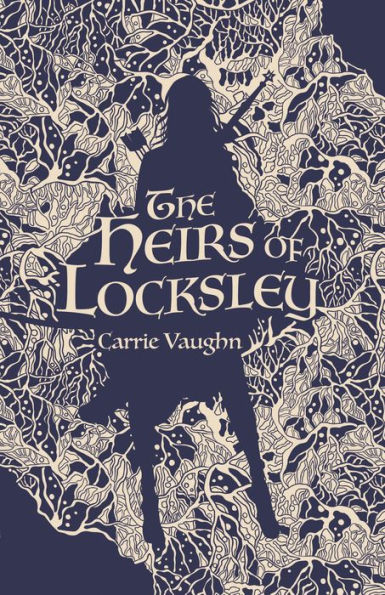Netflix’s Cursed has a killer premise—what if the Lady of the Lake wielded Excalibur?—that it fails to live up to, not least because its teenage Fey sorceress-turned-warrior Nimue (Katherine Langford) is not actually the Lady of the Lake. Not yet—in fact, the opening title card on the television adaptation of Frank Miller and Tom Wheeler’s graphic novel teases that before the Sword of Power chose a King, it chose a Queen, telling viewers all they need to know: This is a prequel that will seek to set itself apart from the tradition of Arthurian legend (except for where it benefits it to namedrop your fantasy faves) to the point where it should just have been its own original fantasy series. Yet it will eventually give way to the familiar story, so that it won’t matter if a Queen wielded Excalibur first, because it will still end up with its King.
The once and future legend actually suffers more for this attempt to retcon its prologue, because in endeavoring to stand apart, it recasts all the Arthurian archetypes in the same tired narrative we’ve seen of late: Special girl is gifted with magical weapon that only she can wield (because reasons), surrounded by a cast of supporting characters who all must follow her (because plot), some of which are disposable and others who will become enemies (because there needs to be a second season). Most bow to her cause and many die bloodily at her blade, and it does nothing to change her character nor her supposed destiny. The series’ will-they/won’t-they couple finally consummate their relationship the night before a big sacrifice. A bunch of characters get retroactively renamed in the final minutes. At this point, I could be describing any number of fantasy sagas instead of the unique origin story that Nimue deserved.
At the start of Cursed, “the age of man is upon us”—us being the Fey, a magical race of people who seem to range from the winged Hidden to humanoids with horns and antlers to people who look “normal,” so long as they don’t get upset and allow their green veins (and control over the forest) to come to the surface. Within their own villages, the Fey seem to exist in relative peace, performing everyday folk magic and occasional ceremonies coinciding with an eclipse. But they live in fear of the Red Paladins, sent by the Church (yep, the one in Rome) to wipe out these supposed ungodly creatures for no reason other than not liking the way they look (although the fact that plenty of them can pass as human doesn’t help their case).

The encroaching race of “man” includes Uther Pendragon (Sebastian Armesto), the current king who doesn’t have the best handle on his realm: A drought has lowered morale, and his advisor Merlin (Gustaf Skarsgård) has mysteriously lost his magic, so lately he’s been acting more like Uther’s drunk court magician and resident mad scientist. But an auspicious vision alerts Merlin to the fact that a certain mythical sword and a certain ordinary girl are about to cross paths.
Too bad she’s (cue the title card)…CURSED.
Even among her own marginalized people, Nimue is a pariah, thanks to a childhood encounter with dark spirits that has left her with a nasty set of scars that seem to have marked her as their own. She suffers epileptic visions, or more accurately, the same single montage-vision over and over that includes an image of her, riddled with arrows, slipping beneath the surface of the water. This isn’t a spoiler—it appears in the first few minutes—and seems an ever-present reminder that no matter how much time Nimue spends on land wielding the Sword of Power and eventually acting as the Fey’s self-appointed Queen, the water will inevitably claim her.
Buy the Book


The Heirs of Locksley
In an effort to build on the Arthurian canon’s limited depiction of Nimue, Wheeler and Miller—and their writers’ room, which includes more than a few women—give her too much to juggle. She’s a Fey but doesn’t want to be a Summoner like her priestess mother Lenore (Catherine Walker). She’s cursed but also, for mysterious reasons, Excalibur’s favorite person. The blade, which is better known by its Fey moniker the Devil’s Tooth, or the more agnostic Sword of Power, turns her into Action Girl and earns Nimue the nickname of the Wolf-Blood Witch, as she stumbles her way through the realm trying to figure out her destiny. She eventually appoints herself Queen of the Fey, leading what amounts to a sometimes fight/sometimes flight in the name of freedom. So much happens to her, and she occasionally tries to make actual decisions, but one gets the sense that even those are out of her control.
Where Cursed tries to put a fresh spin on Nimue’s story (but only further demonstrates her lack of agency) is by recontextualizing her relationships to every man, woman, and object she encounters. Merlin, normally her lover in these retellings, has decidedly non-romantic significance to her journey. Instead, charming biracial mercenary Arthur (Devon Terrell) takes on the mantle of love interest and potential rival for the Sword of Power. Nimue also draws Arthur’s sister Morgan (Shalom Brune-Franklin) out of her abbey and into the Fey’s cause, though they clash over the best use of the sword and over magic in general. Then there’s the sword itself, which is not so much bequeathed to Nimue as she is designated its temporary carrier. Though it passes through a number of hands, including Arthur’s and Merlin’s, the sword is fickle about who its ogham script will light up for. (While I didn’t pause to translate the inscription, I’m assuming it didn’t say “The ale has killed me.”)
Like the sword, I just couldn’t form an emotional attachment to anyone in this series, mostly because it didn’t feel much like Arthurian legend at all.

The problem is, the original source material and its many adaptations are wonderfully soapy. The Pendragon line is dynastic drama at its most self-indulgent, starting with a king who disguises himself as another man to bed that man’s wife—conceiving Arthur, who in turn winds up sleeping with his half-sister Morgan and landing in a love triangle that sees him either cuckolded or (depending on your adaptation) part of a threesome with Lancelot and Guinevere. Then Arthur’s incestuous son Mordred comes back to kill dear old dad… That’s how you do tragic destiny.
The best Arthurian reinterpretations maintain at least some of this over-the-top familial spectacle, but Cursed centers on a bunch of teenagers taking themselves and all this talk of destiny way too seriously. It’s downright exhausting, especially when you try to keep track of all of the extra antagonists and foreign cultures Cursed brings in, which add up to simply too many moving parts and confusing allegiances. The Red Paladins are terrifying in their fanaticism all on their own, but then they have to have a secret weapon: the Weeping Monk (Daniel Sharman), who is supposed to conjure nightmares, but whose black tears just make him look like an emo warrior. The Paladins’ tensions with Uther would have been enough conflict for the humans, but then the show throws in the Viking kingdom whose ice king Cumber might have a more legitimate claim to the throne than Uther, as well as the Viking outcasts, led by a badass pirate queen, who raid whoever’s coffers are fullest that day. The Leper King also wants the Sword of Power, for his own reasons related to clawing his way out of the underworld. Not to mention a random tattooed assassin who wanders around singing and offing minor characters for plot-furthering reasons.
One point in Cursed’s favor is that it boasts an impressively deep bench of women, none of whom have to die for Nimue’s character development. (Well, except for her mom Lenore. There always has to be one.) Over the course of ten episodes, various young women get to explore paths outside of their intended station, whether it’s Nimue’s childhood friend Pym (Lily Newmark) faking it until she makes it as a healer aboard a Viking vessel, or Morgan’s fellow dedicate Sister Iris (Emily Coates) doing her best Arya Stark impression by stabbing and burning everyone who’s on the wrong side of her faith. Pym’s boss, the badass Viking captain known only as the Red Spear (Bella Dayne), has too few scenes but will likely emerge as a fan favorite even in such a short time onscreen. And after a couple of episodes of treading water, plotwise, Morgan gets a renewed purpose in studying dark magic, especially that which can bring back the dead.

It is worth noting that Morgan suffers as the surviving half of a Bury Your Gays trope, though her dabbling in death might mean that her beloved, Sister Celia (Sophie Harkness), could return next season (if there is a next season). This bit of character trauma is indicative of the one-step-forward-two-steps-back kind of storytelling in which Cursed deals: Having a queer Morgan le Fey is a wonderful spin on a character so often defined by her incestuous relationship to her brother, and gives me hope that we might sidestep her stomach-turning union with Arthur down the road. Yet the series’ one queer couple has to be separated by tragedy.
Similarly, the show’s queer Black Morgan and her Black brother Arthur offer an awesome iteration of these famous figures, yet they spend most of the season being ordered around by a magical white girl. Even more baffling is that, as author L.L. McKinney pointed out on Twitter, the Nimue in Cursed the graphic novel does not look white. If the two projects were being developed at basically the same time, it’s galling to think that on the page this pivotal figure could be a woman of color, but that that interpretation still does not translate to the screen.
Speaking of translation, even despite the presence of women in the writers’ room, this story was still spearheaded by two men. Author Margaret Owen made the keen observation via Twitter that this demonstrates the point of larger discussions around the idea that when women propose such ideas, it’s treated as self-insert fanfic, whereas when men pitch it, the story is clearly validated. The fact that Cursed has a healthy roster of female characters feels like a small consolation in the face of this enduring issue.
There’s a huge missed opportunity here in that it’s not really Nimue who’s cursed, but the sword itself. Just as she becomes the stereotype of the inspiring warrior, the Sword of Power becomes the requisite weapon that threatens to destroy anyone who spends too much time wielding it, or who picks it up for the wrong reasons. This is explored rather shallowly in Nimue and Merlin’s conversations, and could actually provide a valid reason why Arthur will eventually earn the record of longest ownership, yet the series never quite gets there.

Instead, after devoting so much time and energy to its conflicts between the Paladins and the Fey (and the Vikings/Tusks and Lepers and Hidden and whoever else got dragged in), Cursed’s finale resorts to revealing the true names of all of its major players so that viewers can fill in the blanks about how the rest of their stories will unfold. Not that you should waste your time watching it, but I’ll put spoilers in white text just in case: Annoying Fey pipsqueak Squirrel (Billy Jenkins) is revealed to be Percival; the Weeping Monk, who rescues him, is actually Lancelot (because of course he is). And while they don’t say it in the show, the Cursed graphic novel reveals that the Red Spear, who got to meet Arthur in the final battle after a we-saved-each-other’s-lives meet-cute, is actually Guinevere. (I don’t know which I groaned harder at, the Lancelot reveal or the fact that Red Spear rhymes with Guinevere.)
This kind of reveal rarely works because it relies more on the dramatic irony of recognizing these names than on any actual character development on the screen. Maybe a potential second season will better embrace the tragic drama of Arthurian legend, but based on the cliffhanger-ish ending, that seems unlikely. Regardless, Miller, Wheeler, and company would have been better off sticking more closely to the source material.
A series like Cursed should elevate Nimue from her archetypal status, expanding and enriching her story. Instead, it’s just turned her into another fantasy symbol, with no more depth than a puddle.
Natalie Zutter has the aforementioned ogham tattoo and has never been so upset to share a bit of worldbuilding with a bad fantasy show. Talk much better Arthurian adaptations with her on Twitter!










